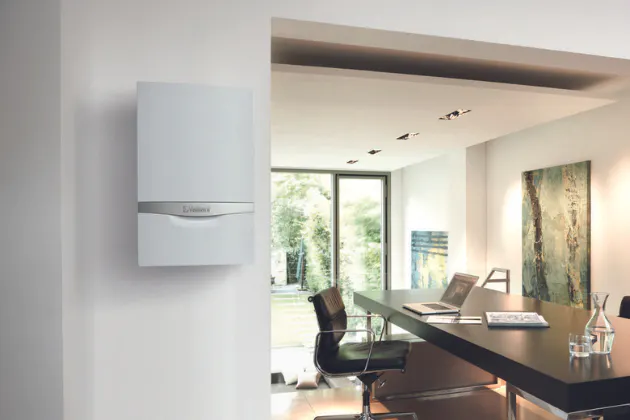Boiler leaks are more than just an inconvenience—they're a potential disaster waiting to unfold in your home. A seemingly minor drip can quickly escalate into a costly repair, structural damage, or even a complete boiler replacement if left unchecked. Every year, thousands of homeowners face the frustrating and potentially dangerous scenario of a leaking boiler, often with little understanding of the underlying causes.
Whether you're a hands-on homeowner looking to diagnose the problem or seeking guidance on when to call in professional help, this article will equip you with the knowledge to tackle boiler leaks confidently and effectively. Understanding the root causes and taking swift action can save you significant expense, prevent potential safety hazards, and ensure your home remains warm and comfortable.

Why is my boiler leaking?
These are the top reasons why you could be experiencing a water leak from your boiler.
- Pressure Issues
Excessive pressure within your boiler is a common culprit for leaks, often manifesting through the pressure relief valve. To identify this issue, locate your boiler's pressure gauge. The optimal pressure range typically falls between 1 and 1.5 bar when the system is cold.
If the gauge reads higher than 1.5 bar, you'll need to reduce the pressure. Start by bleeding your radiators:
- Turn off your heating system and allow it to cool completely.
- Locate the bleed valve on each radiator (usually found at the top corner).
- Place a cloth beneath the valve to catch any water.
- Use a radiator key to open the valve slowly, turning anticlockwise.
- You'll hear a hissing sound as air escapes. Once water begins to flow steadily, close the valve.
- Repeat for all radiators.
After bleeding, check the boiler pressure again. If it remains high, you may need to drain some water from the system using the drain cock, typically located on the lowest point of the pipework.
- Loose Fittings and Joints
The constant heating and cooling cycles of your boiler cause metal components to expand and contract. Over time, this can lead to loosened fittings and joints, resulting in leaks.
To address this:
- Conduct a visual inspection of all visible pipework and connections.
- Look for signs of water or damp patches around joints and fittings.
- If you spot a potentially loose fitting, dry the area thoroughly.
- Wait to see if water reappears, confirming the source of the leak.
- Using an appropriately sized wrench, carefully tighten the fitting with a quarter turn.
- Be cautious not to over-tighten, as this can damage the fitting or pipework.
If tightening doesn't resolve the issue, or if you're unsure about the procedure, it's best to consult a professional.
- Damaged Seals and Gaskets
Seals and gaskets play a crucial role in maintaining your boiler's water-tight integrity. These components can deteriorate over time due to heat, pressure, and natural wear.
Signs of damaged seals or gaskets include:
- Visible cracks or splits in the seal material
- Water accumulation around sealed areas
- Persistent dripping even when the boiler is off
While it might be tempting to replace these components yourself, it's generally advisable to enlist a qualified technician. They can:
- Accurately identify the failing seal or gasket
- Ensure the correct replacement part is used
- Properly install the new component without damaging surrounding areas
- Test the system to confirm the leak has been resolved
- Faulty Temperature and Pressure Relief Valve
The temperature and pressure (T&P) relief valve is a critical safety feature, designed to release excess pressure or temperature to prevent dangerous build-ups. If this valve is faulty, it may leak continuously or fail to seal properly after activation.
Common signs of a faulty T&P valve include:
- Constant dripping or flow from the valve's outlet pipe
- Visible corrosion or mineral deposits around the valve
- Inability to reset the valve after it has been activated
Due to the safety-critical nature of this component, replacement should always be carried out by a qualified heating engineer. They will:
- Assess whether the valve is truly faulty or if it's responding to another system issue
- Select and install the correct replacement valve
- Ensure the new valve is correctly calibrated and functioning as intended
- Internal Corrosion
Internal corrosion is a serious issue that can lead to leaks and system failure if left unchecked. It's often caused by:
- Chemical imbalances in the water
- Oxygen ingress into the system
- Debris accumulation
To prevent and address internal corrosion:
- Ensure your system is filled with treated water to inhibit corrosion.
- Have your boiler serviced annually by a qualified technician who can:
- Check for signs of corrosion
- Clean the system if necessary
- Add or replenish corrosion inhibitors
- Address any small leaks promptly, as these can introduce oxygen into the system.
- Consider installing a magnetic filter to capture metallic debris before it can cause damage.
If severe corrosion is detected, components may need replacement, or in extreme cases, a full system flush and refill might be necessary.
- Faulty Heat Exchanger
The heat exchanger is the heart of your boiler, responsible for transferring heat from the combustion process to your home's water supply. A leak in this component is serious and often indicates the need for significant repair or replacement.
Signs of a faulty heat exchanger include:
- Water dripping from the bottom of the boiler casing
- Activation of the boiler's low pressure sensor
- Irregular heating or hot water performance
Repairing or replacing a heat exchanger is a complex task that requires professional expertise. In many cases, especially with older boilers, a faulty heat exchanger may necessitate replacing the entire boiler unit.
- Other Causes
While less common, other potential causes of boiler leaks include:
- Damaged blowdown valve: This valve, used for flushing sediment from the boiler, can develop leaks if worn or improperly sealed.
- Leaky auto-air vent: Designed to release trapped air, this component can malfunction and allow water to escape.
- Sediment in the pressure valve: Accumulated debris can prevent the valve from sealing properly, causing persistent leaks.
These issues typically require professional diagnosis and repair to ensure the integrity and safety of your heating system.
FAQs
Get help with your boiler leak
By understanding these common causes of boiler leaks, you can better identify and address issues promptly, potentially saving on repair costs and extending the life of your heating system. However, when in doubt, always consult a qualified heating engineer to ensure safe and effective resolution of any boiler problems.
You can contact our professionals at 0800 246 1041 or 07712 172 171 for assistance.

